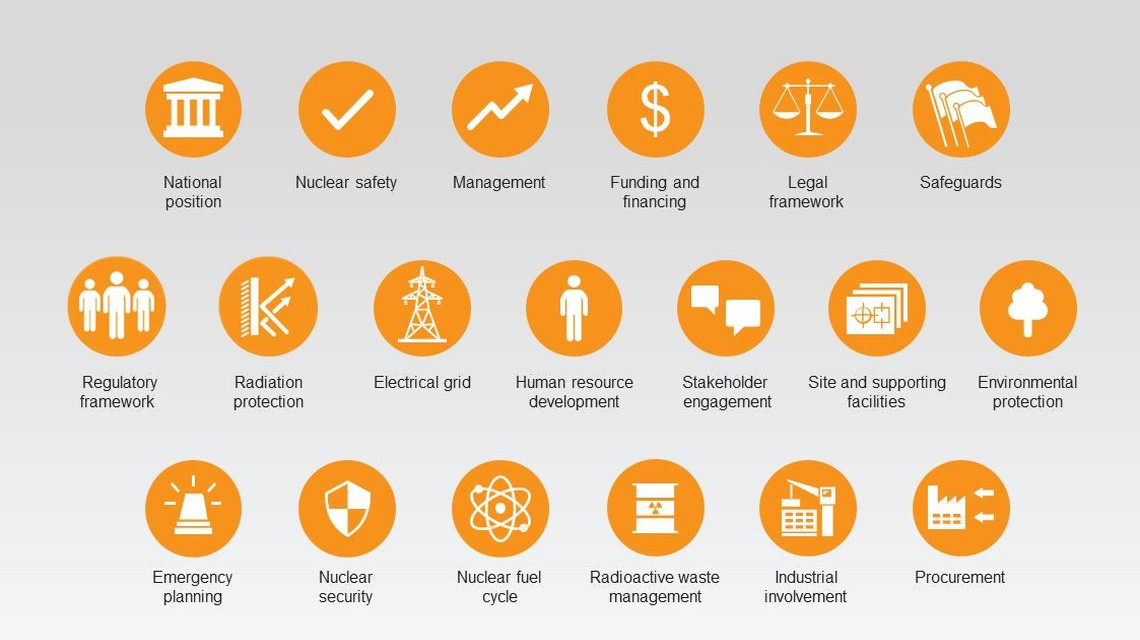The Milestones Approach splits the activities necessary to establish the infrastructure for a nuclear power programme into three progressive phases of development, with the duration of each dependent on the degree of commitment and resources applied in the country. The completion of each phase is marked by a specific “Milestone” at which progress can be assessed and a decision can be made about the readiness to move on to the next phase.
The three phases in developing the infrastructure necessary to support a nuclear power programme are:
Phase 1: Considerations before a decision to launch a nuclear power programme is taken; a Pre-Feasibility Study will help a country establish a strong national position and answer the key question: why nuclear? This process begins early in Phase 1 after nuclear power is included as an option in the energy strategy.
Phase 2: Preparatory work for the contracting and construction of a nuclear power plant after a decision has been taken; in this phase, key organizations as well as the legal and regulatory frameworks are established.
Phase 3: Activities to implement the first nuclear power plant.
The completion of each phase is marked by a specific milestone at which the progress of the development effort can be assessed and a decision can be made to move on to the next phase. These milestones are:
Milestone 1: Ready to make a knowledgeable commitment to a nuclear power programme;
Milestone 2: Ready to invite bids/negotiate a contract for the first nuclear power plant;
Milestone 3: Ready to operate the first nuclear power plant.





